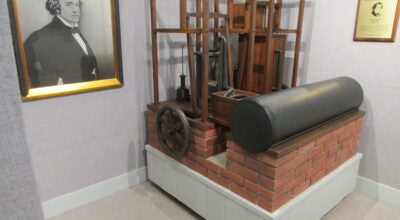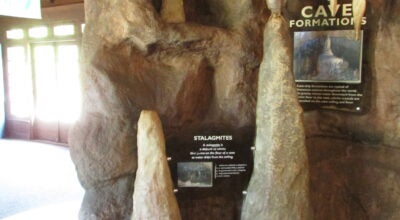The continuing story of the Dog Island Lighthouse
Published 8:49 pm Tuesday, July 15, 2014
When looking at a map of Apalachicola Bay, in the area of East Point, you will see several barrier islands, one of which is Dog Island. You will notice that it is right where the entrance to Crooked River and Carrabelle is. This is also an area where there is a lot of movement in the form of shifting sands and ever-building reefs.
The need for a lighthouse was very apparent, especially when all of the shipwrecks that occurred there were counted. This revealed that most happened near Dog Island. One shipwreck that was discovered by Florida State University’s Underwater Archive Program is that of the Vale. This 554-ton Norwegian bark mainly carried lumber as its cargo. Since this area of the Florida panhandle provided many hardwoods and other lumbers, it was a very lucrative trade commodity.
All was going quite well. The city of Carrabelle was growing when in August, 1899, a massive hurricane was moving towards the Carrabelle and Apalachicola area. At this time, the Vale and 11 other vessels were busily off- loading and on – loading pine and other logs. The black sky was coming and the ships were in a hurry to move away from the storm.
The high winds sent large, powerful waves crashing onto the loose, sandy beaches. Amidst the constant pounding, the Vale and the other vessels moored there were shredded like cheese in a food processor.
Remnants of these sunken ships were discovered in 1999. FSU’s Underwater Archive Team had partially uncovered the remains of the Vale.
Another famous wreck is that of the British ship, HMS Fox. She set sail on Sept. 4, 1799, from Nassau in the Bahamas with her destination being the Apalachee region of Florida. Unfortunately, she was caught in a fierce storm, probably a hurricane. The Fox ran aground in between St. George and Dog Island. She lost most of her cargo of supplies and munitions. Nothing is known of the deaths from the storm.
There were many other shipwrecks, but these two have the most information known about them.
Of course, with all of these happenings, the need for a lighthouse to guide ships through the East Passage between Dog and St. George Islands and then on to Carrabelle was finally realized. In 1838, the government gave the go-ahead to build the Dog Island Lighthouse.
The site chosen was on the western tip of the island. Being located here, it would mark the middle entrance to St. George Island. Jacob Meyers was put in charge of overseeing the construction. When completed, he became the first keeper.
The lighthouse was a 50 foot brick tower and was completed in 1839. There were three “firsts” on the island. One, it had a revolving light so it could be distinguished from the stationary light on St. George Island. Second, in February 1839, its light began shining over the Gulf waters. Third, this marked the first known permanent human habitation on the island.
However, in October 1843, a storm destroyed what was then keeper Latham Babcock’s house and badly damaged the lighthouse. A temporary wooden tower was built in 1844. It was damaged and repaired quite a few times during its life.
The repairs to the original brick tower were completed in 1851. Unfortunately, it was damaged by a storm in that same year.
Once again, it was rebuilt and was finished in 1852. The obsolete lamp and reflector system was replaced by a forward drop lens in 1856 that was more efficient.
The Civil War presented dangers to the lighthouses on the Gulf, and Dog Island light was no exception. To keep the enemy from using the lighthouse against them, the Confederate forces burned the stairs in the tower and damaged the lens. Now, it could not be used as a lighthouse or a watchtower.
Their actions proved to be a good step because the enemy forces took control of Dog Island. It was considered a front line of defense by the Union blockaders. Occasionally, landing parties would come ashore and gather firewood. Also, since there were no Confederate soldiers stationed at the lighthouse, it was used for rest and recreation by the sailors who were on the enemy ships.
When the war was over, the lighthouse was repaired and put back into service. However, the movement of the Gulf waters proved to be more deadly than the war. The storms that brought danger and destruction to ships also caused the same problems for the lighthouses, especially the one on Dog Island.
The death blow came during a storm in1873. Beaches were eroded so badly that the tower slipped one foot off of perpendicular. The lens ‘was then removed and placed on the top of the keeper’s house. This way if the tower fell, the lantern would be safe. This proved to be a futile move and a temporary fix for a situation in which fate was in charge. The hurricane of Sept. 18, 1873, proved to be the closer as it destroyed both the tower and the keeper’s house.
Dog Island was not only hard on its light towers, it was also hard on its keepers. Most wanted short stays of about one year. With the isolation, coupled with the danger and the very low pay of around $300 per year, keepers left quickly and replacements were hard to find. On Dog Island, Ellis Jackson’s watch lasted only six weeks. The longest stay that I found was that of Joseph Ridlin from 1846 to 1855.
After his watch at Dog Island, he went to Cape San Bias, another very isolated spot.
The Dog Island lighthouse was never replaced. Instead, a skeletal, iron structure was built in 1893 and lit in 1895. This tower is near Carrabelle on the Crooked River. It is the leading light for the same channel that was formerly marked by Dog Island light.
The remains of Dog Island lighthouse were discovered during a Shipwreck Survey. Using a side scan sonar, the team found the brick ruins, which are now located just offshore of the island. This proves that the gypsy-like island is slowly making its way closer to the mainland. Amazingly, the island has completely passed over the lighthouse which at one time was situated on the inside of the island. In 2000, the remains of the keeper’s house was found.
Water is the most powerful force on earth. It has carved deep gorges, obliterated land masses and created new ones. Even our Lake Seminole has changed since its birth. Thus, the relentless change continues.





